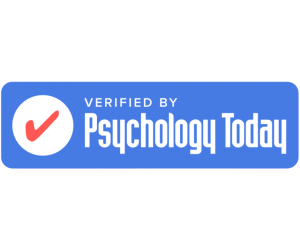Percocet is one of the most commonly prescribed opioid pain relievers in the United States. However, although it is supposed to help people, it has a high potential for abuse and addiction. Unfortunately, many who try to quit it return to it to ease Percocet withdrawal symptoms.
The good news is that detoxing from Percocet is possible, and so is overcoming its addiction. However, you should never attempt to do it without medical help, as it could lead to relapse, overdose, and even death.
What Is Percocet?
Percocet is a potent pain reliever prescribed to treat moderate to severe acute pain that contains two active ingredients:
- Acetaminophen, an over-the-counter analgesic also known as paracetamol
- Oxycodone, a semi-synthetic opioid derived from the opium alkaloid thebaine
This drug combination is available in both generic and brand-name forms. While Percocet® is arguably the most popular brand name for it, some other brand names it is marketed and sold under are Endocet®, Tylox®, and Roxicet®.
Percocet relieves pain by binding to opioid receptors in the central nervous system (CNS) and blocking pain signals from reaching the brain. It also stimulates the release of dopamine, inducing euphoria, deep relaxation, and similar feelings.
That said, Percocet has a high potential for abuse, dependence, and addiction.
For this reason, it’s only prescribed when non-opioid painkillers cannot be used or aren’t potent enough. Still, over 10 million oxycodone/acetaminophen prescriptions were issued in the United States in 2020 alone.
It’s also not recommended for chronic pain treatment, as long-term use may increase the risk of developing a Percocet addiction.
Percocet Withdrawal Symptoms
Along with tolerance, Percocet withdrawal symptoms are a sign of physical dependence on Percocet.
If you take Percocet regularly, you’ll eventually build up tolerance for this drug, meaning that you’ll need increasingly larger doses to feel its effects. Once you develop a dependence on Percocet, you can no longer function normally without it.
If you suddenly stop taking it or reduce your usual dose, you’ll experience physical and psychological Percocet withdrawal symptoms as your body eliminates the drug. These symptoms can be extremely uncomfortable and even potentially life-threatening.
The most common Percocet withdrawal symptoms are:
- Agitation
- Anxiety
- Body aches
- Changes in body temperature
- Chills
- Depression
- Diarrhea
- Enlarged pupils
- Excessive yawning
- Fatigue
- Goosebumps
- Joint pain
- Mood changes
- Muscle aches
- Nausea
- Percocet cravings
- Runny nose
- Sleep disturbances
- Stomach ache
- Sweating
- Tremors
- Vomiting
- Watery eyes
The more severe your dependence on Percocet is, the more intense your withdrawal symptoms will be. Tapering off Percocet can help you get off the drug gradually, thus easing your withdrawal symptoms.
Meanwhile, quitting this medication “cold turkey” can lead to particularly intense Percocet withdrawal symptoms, exposing you to a higher risk of relapse, opioid overdose, and death.
Percocet Withdrawal Timeline
The Percocet withdrawal timeline is different for everyone, as it largely depends on how long, at what doses, and how frequently you’ve been taking this medication.
Your liver health, metabolism, age, and other individual factors that affect how quickly your body breaks down substances may also impact the duration of Percocet withdrawal.
With that in mind, here’s what the Percocet withdrawal timeline looks like for most people:
Day 1
Percocet withdrawal symptoms usually begin within 5–8 hours after taking the last dose and feel similar to the flu.
Most often, the first withdrawal symptoms to appear are:
- Muscle aches
- Joint pain
- Runny nose and watery eyes
- Sweating
- Goosebumps
Days 2–3
The first three days of Percocet withdrawal can be very hard, as withdrawal symptoms usually peak around 48–72 hours after the last dose.
In addition to flu-like symptoms, you may also experience the following during this time:
- Fatigue
- Abdominal pain
- Nausea
- Vomiting
- Diarrhea
- Irritability
- Mood swings
- Tremors
- Dilated pupils
- Anxiety
Days 4–7
After peaking, physical Percocet withdrawal symptoms begin to subside. However, toward the end of the first week, you may find that psychological withdrawal symptoms—such as cravings, depression, and anxiety—become more intense.
Days 8+
For most people, Percocet withdrawal symptoms should subside within 7–10 days.
However, you may experience severe psychological Percocet withdrawal symptoms long after that. Unless you seek treatment for them, you may be at an exceptionally high risk of relapse during this time.
Percocet Post-Acute Withdrawal Syndrome (PAWS)
Percocet post-acute withdrawal syndrome (PAWS) refers to a set of withdrawal symptoms that persist for several weeks or months after quitting Percocet. In severe cases, PAWS can continue even for years.
While acute Percocet withdrawal symptoms usually subside within a week or a bit more, some people experience these symptoms for much longer than that. These symptoms are usually psychological and may include:
- Cravings
- Depression
- Anxiety
- Sleep problems
- Fatigue
- Irritability
- Mood swings
- Difficulty focusing
If you suspect you or someone you love may be struggling with PAWS, seek medical attention. Suffering from protracted withdrawal symptoms can not only affect the quality of your life but also increase the risk of relapse.
How to Manage Percocet Withdrawal Symptoms
The best way to manage Percocet withdrawal symptoms is to seek professional help. While it’s possible to relieve some symptoms with home remedies, managing them without medical help can be very difficult and dangerous.
Withdrawal from Percocet looks different for everyone. However, if you’re dependent on this drug, you should never attempt to quit it by yourself. If left untreated, Percocet withdrawal symptoms can be potentially life-threatening. For example, vomiting and diarrhea could lead to extreme dehydration.
On top of that, quitting Percocet without medical supervision increases the risk of relapse. Given that your tolerance to Percocet reduces when you’re not taking it, this can easily lead to a fatal overdose.
In 2022, more than 11,500 Americans died from overdosing on natural and semi-synthetic opioids such as Percocet. Seeking a Percocet addiction treatment is key to safely getting off opioids.
Risks and Dangers of Taking Percocet
The greatest risk and danger of taking Percocet is becoming addicted to it. Like all opioids, Percocet carries a high risk of abuse and opioid addiction, which is why it is classified as a Schedule II controlled substance.
In 2021, oxycodone products—including Percocet—were the second most commonly misused prescription painkillers among Americans over the age of 12. 30.4% of all prescription painkiller misusers abused oxycodone-based drugs in particular.
Since Percocet contains not only oxycodone but also acetaminophen, it can damage your liver and even lead to liver failure. For this reason, you shouldn’t take it if you have liver problems. Also, never mix Percocet with alcohol because it can increase the risk of liver injury, respiratory depression, opioid overdose, and death.
Moreover, Percocet can also cause various side effects, including:
- Appetite loss
- Brain fog
- Constipation
- Decreased blood pressure
- Difficulty breathing
- Fatigue
- Headache
- Itching
- Nausea
- Seizures
- Vomiting
Always follow your doctor’s instructions when taking your medication to minimize the risk of Percocet abuse, addiction, and side effects. Also, inform your doctor about any side effects you’re experiencing (including those not mentioned above) while using Percocet.
How to Detox From Percocet
To detox from Percocet safely, you should seek medical help. Percocet detox is the process of eliminating the drug from your system, which is often accompanied by distressing withdrawal symptoms that make it extremely difficult to quit the drug.
Medical detox is carried out under medical supervision. Usually, you’ll be given medications to ease Percocet withdrawal symptoms while your body clears out the drug.
Rapid detox is a similar treatment, except it involves administering drugs such as naloxone to induce Percocet withdrawals. Unlike medical detox, which can take around a week, rapid detox takes around a couple of days.
However, many people continue to struggle with Percocet withdrawal symptoms after undergoing these costly procedures, and it’s not unusual for them to relapse.
That’s where Accelerated Neuro-Regulation (ANR) enters the scene. It is an opioid addiction treatment that goes beyond Percocet detox and returns your brain to its pre-addiction state. It is the only treatment that negates the risk of relapse and ongoing withdrawal symptoms.
ANR Treatment Timeline
Now that you know how to detox from Percocet, let’s take a look at the Percocet treatment timeline for ANR patients.
Day 1
On the day of the procedure, you’ll be put under sedation and administered medication to begin the withdrawal process. Our board-certified anesthesiologist and medical team will cleanse Percocet out of your system and re-regulate your endorphin-receptor balance. Thanks to the sedation, you won’t feel discomfort and will wake up without any withdrawal symptoms.
Then, you’ll spend the night at the hospital under our care.
Day 2+
Most of our patients are released from the hospital the day after the procedure. For best results, you should continue to follow our recommendations after returning to your daily life.
Percocet Rapid Detox vs. ANR Treatment
The key difference between Percocet rapid detox and the ANR treatment is that ANR actually targets the root cause of opioid addiction instead of just eliminating the drug from the system.
Although Percocet rapid detox costs thousands of dollars, it doesn’t address the brain imbalance resulting from opioid use, which means it doesn’t prevent relapse. Besides that, it may cause uncomfortable and potentially life-threatening side effects, including vomiting and pulmonary edema, among others.
Meanwhile, the ANR treatment is designed to reverse the opioid-induced changes in the central nervous system. Since it re-regulates the endorphin-receptor system to its normal state, ANR eliminates all withdrawal symptoms—including cravings—that often cause people to relapse.
Not only is ANR always performed by experienced medical staff in an ICU setting of accredited hospitals, but it is also tailored to each patient’s medical history and needs, maximizing its safety and effectiveness.
ANR Opioid Treatment for Percocet Addiction
Accelerated Neuro-Regulation (ANR) is a revolutionary opioid dependency treatment that enables you to overcome Percocet dependency by reversing the drug’s effects on your brain.
Unlike rapid detox, ANR doesn’t simply manage Percocet withdrawal symptoms but tackles the core of the problem. Thanks to this innovative approach, ANR is the most modern and effective opioid dependency treatment available today.
While traditional opioid dependency treatments only help patients detox from opioids, ANR goes beyond that. Our highly experienced medical staff will not only put you under heavy sedation and induce Percocet withdrawal but also re-regulate your opioid and endorphin-receptor systems to a pre-addiction state. As a result, ANR completely eliminates the risk of relapse.
The average hospital stay for the ANR treatment is 36 hours, so you can return to an opioid-free life in just a few days!
Reach out to us for a free consultation to start your recovery journey today!
Key Takeaways
Here’s a summary of the key points we discussed about Percocet withdrawal and detox:
- Percocet is a combination drug consisting of oxycodone and acetaminophen that can effectively relieve pain but can also be highly addictive.
- Percocet withdrawal symptoms—nausea, vomiting, runny nose, depression, cravings, and the like—occur when people dependent on this drug try to quit it.
- You should detox from Percocet in a medical setting, as opioid withdrawal can be not only hard to bear but also potentially life-threatening.
Percocet Withdrawal & Detox FAQ
Some common withdrawal symptoms of coming off Percocet are watery eyes, runny nose, nausea, vomiting, and muscle aches. You may also experience psychological withdrawal symptoms, such as irritability, anxiety, and cravings.
Yes, Percocet can cause an opioid addiction even if you take it as prescribed. Like other opioids, it stimulates opioid receptor production and reduces that of endorphin receptors. These neurobiological changes are the root cause of opioid addiction.
Withdrawal from Percocet lasts 7–10 days on average. However, the length of withdrawal depends on how long you’ve been addicted to Percocet and the dose you were using. Some symptoms may last for several weeks, and long-term treatment may be required.
Percocet is used for the treatment of moderate to severe pain. While it can relieve chronic pain, it’s usually only recommended for acute pain treatment since long-term use of Percocet increases the risk of addiction.
Percocet stays in your system for 19 hours on average but can be detected in the blood for 24 hours. Your age, metabolism, and other similar factors also affect how long it stays in your system.
No, Percocet is a legal prescription opioid classified as a Schedule II Controlled Substance. However, it is illegal to obtain and use unless prescribed by a physician. Percocet can easily lead to a drug abuse or substance abuse issue.
Yes, you can fully detox from Percocet. While most people detox from it in a week or so, you shouldn’t attempt to do it alone due to a heightened risk of relapse.
ANR stands for Accelerated Neuro-Regulation, which is the only opioid addiction treatment that addresses the root cause of opioid dependence. By returning your brain to its normal state before addiction, ANR allows you to make a lasting recovery from opioid addiction and forget about the fear of relapse.







